Corey Owens
Automated Detection of Gait Events and Travel Distance Using Waist-worn Accelerometers Across a Typical Range of Walking and Running Speeds
Jul 10, 2023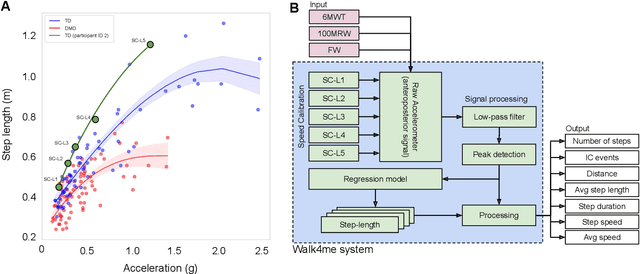
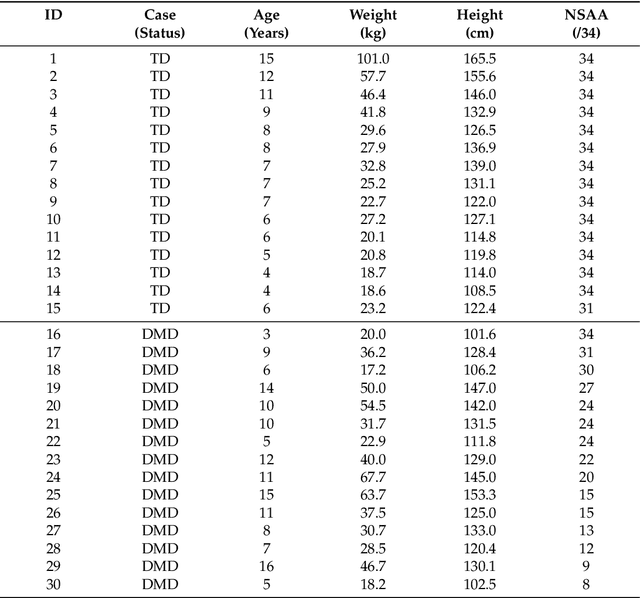
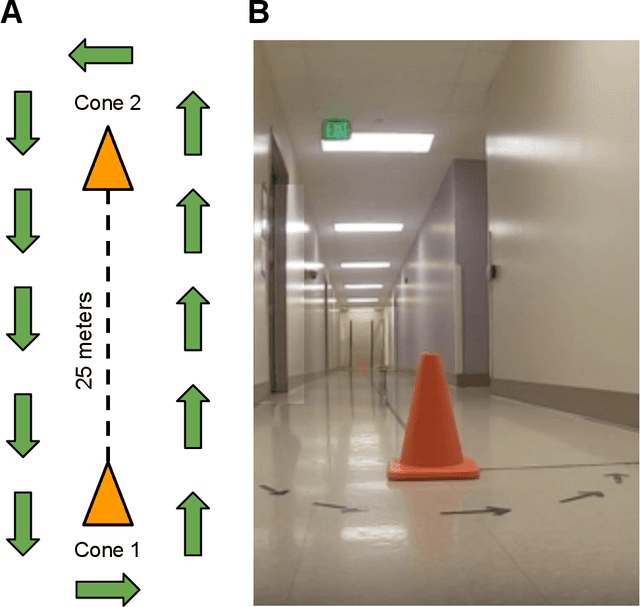
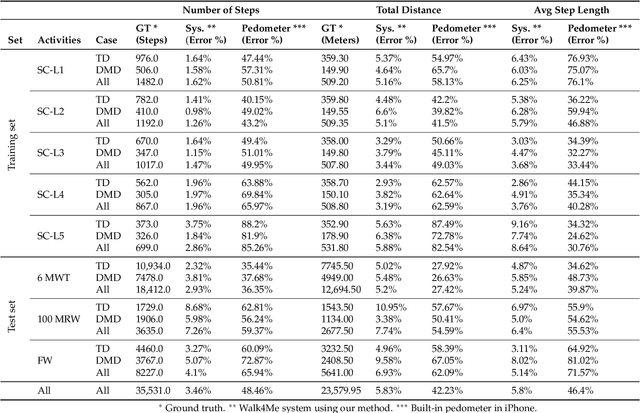
Abstract:Background: Estimation of temporospatial clinical features of gait (CFs), such as step count and length, step duration, step frequency, gait speed and distance traveled is an important component of community-based mobility evaluation using wearable accelerometers. However, challenges arising from device complexity and availability, cost and analytical methodology have limited widespread application of such tools. Research Question: Can accelerometer data from commercially-available smartphones be used to extract gait CFs across a broad range of attainable gait velocities in children with Duchenne muscular dystrophy (DMD) and typically developing controls (TDs) using machine learning (ML)-based methods Methods: Fifteen children with DMD and 15 TDs underwent supervised clinical testing across a range of gait speeds using 10 or 25m run/walk (10MRW, 25MRW), 100m run/walk (100MRW), 6-minute walk (6MWT) and free-walk (FW) evaluations while wearing a mobile phone-based accelerometer at the waist near the body's center of mass. Gait CFs were extracted from the accelerometer data using a multi-step machine learning-based process and results were compared to ground-truth observation data. Results: Model predictions vs. observed values for step counts, distance traveled, and step length showed a strong correlation (Pearson's r = -0.9929 to 0.9986, p<0.0001). The estimates demonstrated a mean (SD) percentage error of 1.49% (7.04%) for step counts, 1.18% (9.91%) for distance traveled, and 0.37% (7.52%) for step length compared to ground truth observations for the combined 6MWT, 100MRW, and FW tasks. Significance: The study findings indicate that a single accelerometer placed near the body's center of mass can accurately measure CFs across different gait speeds in both TD and DMD peers, suggesting that there is potential for accurately measuring CFs in the community with consumer-level smartphones.
Gait Characterization in Duchenne Muscular Dystrophy (DMD) Using a Single-Sensor Accelerometer: Classical Machine Learning and Deep Learning Approaches
May 12, 2021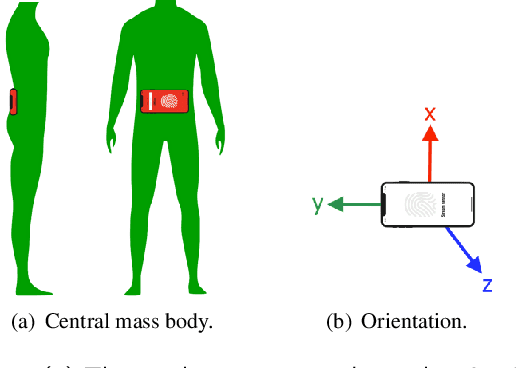
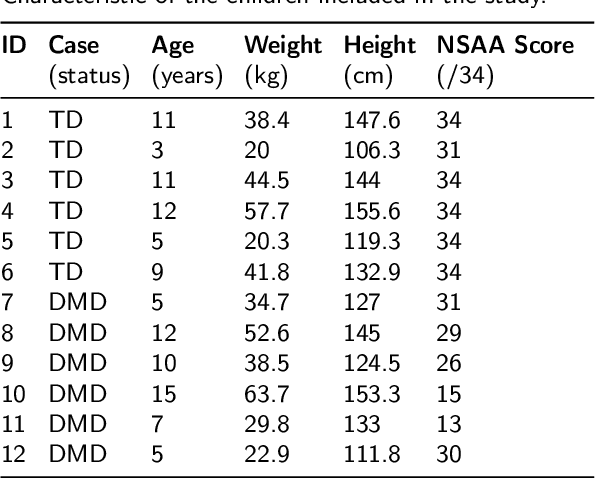

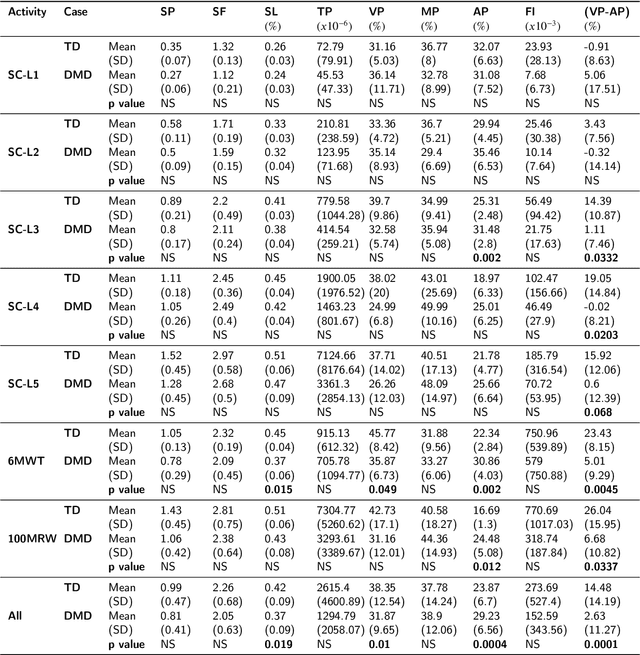
Abstract:Differences in gait patterns of children with Duchenne muscular dystrophy (DMD) and typically developing (TD) peers are visible to the eye, but quantification of those differences outside of the gait laboratory has been elusive. We measured vertical, mediolateral, and anteroposterior acceleration using a waist-worn iPhone accelerometer during ambulation across a typical range of velocities. Six TD and six DMD children from 3-15 years of age underwent seven walking/running tasks, including five 25m walk/run tests at a slow walk to running speeds, a 6-minute walk test (6MWT), and a 100-meter-run/walk (100MRW). We extracted temporospatial clinical gait features (CFs) and applied multiple Artificial Intelligence (AI) tools to differentiate between DMD and TD control children using extracted features and raw data. Extracted CFs showed reduced step length and a greater mediolateral component of total power (TP) consistent with shorter strides and Trendelenberg-like gait commonly observed in DMD. AI methods using CFs and raw data varied ineffectiveness at differentiating between DMD and TD controls at different speeds, with an accuracy of some methods exceeding 91%. We demonstrate that by using AI tools with accelerometer data from a consumer-level smartphone, we can identify DMD gait disturbance in toddlers to early teens.
 Add to Chrome
Add to Chrome Add to Firefox
Add to Firefox Add to Edge
Add to Edge